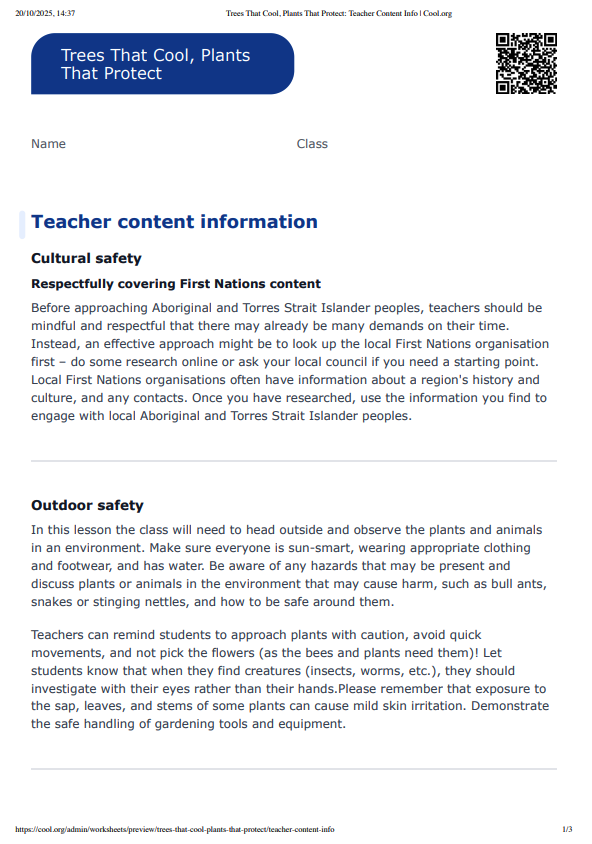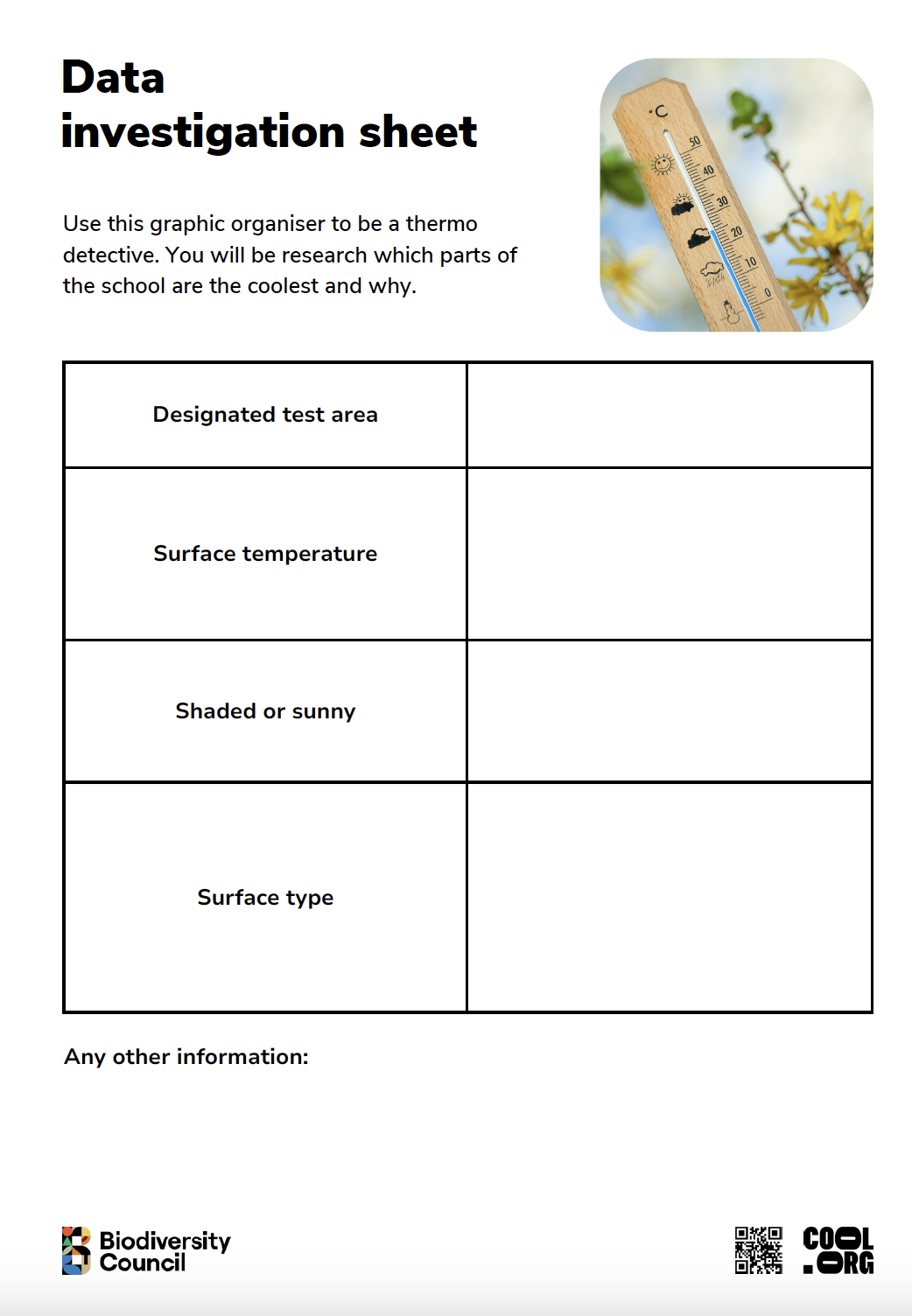Lesson summary
Students will work collaboratively to understand the meaning of ‘thermoregulate’. In groups, they will investigate and measure temperatures around their school, and research local native or culturally significant plants that cool spaces and support wildlife. Using their findings, students will identify an area of the school that needs more cooling and design a plan for a small ‘cool corridor’ or culturally significant garden. They will select appropriate local plants from their research, and prepare and plant the area as a team.
Learning intentions
Students will:
- examine how trees and native plants reduce heat and support wildlife
- plan a garden using culturally significant or native species.
Success criteria
Students can:
- explain the environmental and cultural benefits of planting native vegetation
- contribute to designing or planting a native garden.
Lesson guides and printables
Curriculum links
Select your curriculum from the options below.
Lesson details
Skills
This lesson is designed to build students’ competencies in the following skills:
- critical thinking
- collaboration
- communication
- community engagement
- cultural understanding
- problem solving
- prototyping
Curriculum Mapping
Australian Curriculum (v9.0) content description:
Year 5, Science
Students learn to:
- examine how particular structural features and behaviours of living things enable their survival in specific habitats (AC9S5U01).
Year 6, Science
Students learn to:
- investigate the physical conditions of a habitat and analyse how the growth and survival of living things is affected by changing physical conditions (AC9S6U01).
Relevant parts of Year 5 Science achievement standards: Students explain how the form and behaviour of living things enables survival.
Relevant parts of Year 6 Science achievement standards: Students explain how changes in physical conditions affect living things.
NSW Syllabus outcomes: Stage 3
A student:
- examines how the environment affects the growth, survival and adaptation of living things (ST3-4LW-S).
General capabilities: Critical and Creative Thinking, Intercultural Understanding, Literacy, Numeracy
Cross-curriculum priority: Aboriginal and Torres Strait Islander Histories and Cultures, Sustainability
Level of teacher scaffolding: High - organisation of equipment and safety of students during outdoor tasks
UN Sustainable Development Goals
Target 4.7: By 2030, ensure that all learners acquire the knowledge and skills needed to promote sustainable development, including, among others, through education for sustainable development and sustainable lifestyles, human rights, gender equality, promotion of a culture of peace and non-violence, global citizenship and appreciation of cultural diversity and of culture’s contribution to sustainable development.
Resources Required
- Activity sheet - Data investigation sheet
- Activity sheet - Interactive digital worksheet
- Clipboards
- Infrared or digital thermometers (1 per group)
- Map of school grounds (for planning testing sites)
- Pens/pencils
- Plants
- Soil/mulch for planting
- Tools for planting
- Visual Explainer - Trees are Cool
Additional Info
This lesson was created in collaboration with The Biodiversity Council.
Special thanks to our content partner, The Conversation and to The Garry White Foundation, The Hugh D. T. Williamson Foundation, Wedgetail and The James Kirby Foundation for their generous financial support.





Welcome back!
Don't have an account yet?
Log in with:
Create your free Cool.org account.
Many of our resources are free, with an option to upgrade to Cool+ for premium content.
Already have an account?
Sign up with:
By signing up you accept Cool.org's Terms and Conditions(Opens in new tab) and Privacy Policy(Opens in new tab).